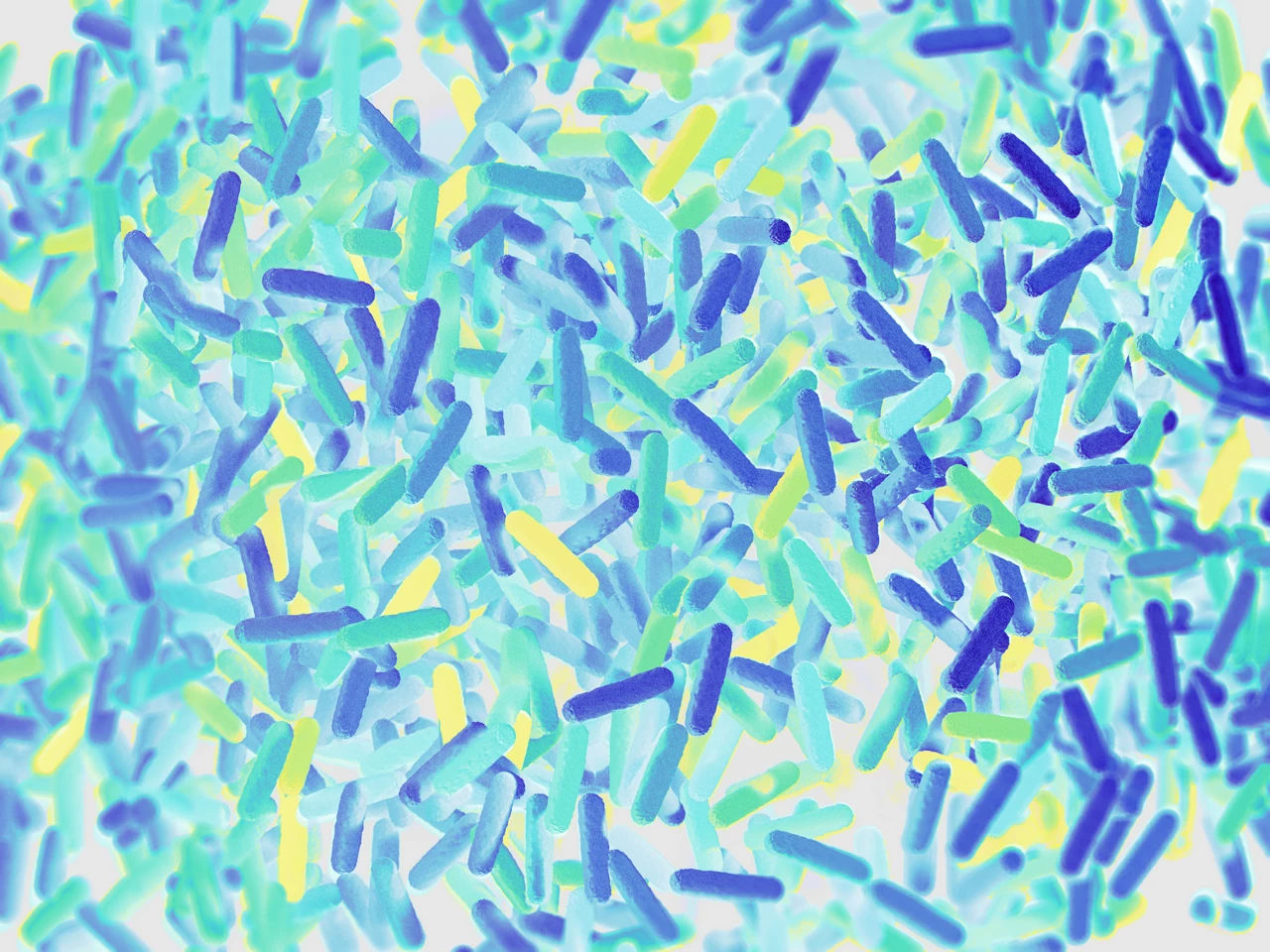The importance of prebiotics in the first 1,000 days for gut and health immunity
Nutrition in the first 1,000 days of life has long-term impact. The first 1,000 days (from conception to age two) are widely accepted to be the most significant period in a child’s development2,3. During this formative time, a child’s organs and body systems grow rapidly and are highly responsive to nutritional influence4. Therefore, this period offers a critical window to influence long-term health.

Please log in to access this content
Simply log in or register to Nutricia Academy today to access this content as well as a host of other trusted education resources.

Know your biotics1
- Probiotics are naturally occurring friendly bacteria that affect the gut microbiota when ingested
- Prebiotics are non-digestible carbohydrates that pass intact through the upper part of the gut and stimulate the growth or activity of friendly bacteria
- Postbiotics are bioactive components produced by the metabolic activity of probiotic bacteria, which have an important role in the regulation of biologic activity in the gut
Building immunity from the start
The gut and immune system develop rapidly throughout the first 1,000 days, as babies move from a protected environment to one where they are exposed to lots of immune challenges. Nutrition plays a significant role in influencing the gut microbiota, shaping the development of both the gut and the immune system5. From birth, microbes in the gut perform essential duties6:
- The digestion and metabolism of food
- The production of neurotransmitters that affect behaviour and cognitive function. The gut microbiota exerts influence over anxiety, mood, sociability and cognition
- The development and activation of the immune system. The gut is the centre of the immune system – 70-80% of the body’s immune cells are in the gut7
Supporting the maturation, diversity and condition of the gut microbiota through optimal nutrition in the first 1,000 days is fundamental for the development of a healthy immune system8,9, protecting against harmful bacteria, reducing risk of disease, and safeguarding future health5.
Prebiotic power
Breastmilk is the best form of nutrition for babies, containing all of the nutrients required to support a baby’s healthy growth and development in the first six months (see figure 110,11).
In early infancy, nutrition greatly influences the composition of the gut microbiota, and in turn, the emerging immune system5,12,13. The composition of breastmilk is complex; it helps to strengthen baby’s developing immune system by providing protective bioactive elements such as prebiotic oligosaccharides, live bacteria and metabolites14,15. These prebiotic oligosaccharides help to positively shape the infant’s gut microbiota, promoting the growth of beneficial or ‘friendly’ bacteria (e.g: bifidobacteria and lactobacilli)8,16-18.
Prebiotics are non-digestible carbohydrates. They travel to the gut intact and are fermented by the friendly bacteria that reside there18. Postbiotics are produced by this natural fermentation process in the gut, including short-chain fatty acids (SCFAs)19, which help to maintain the gut barrier and have been shown to influence immune function5
Pioneering prebiotic research
Inspired by over 40 years of breastmilk research, Nutricia Early Life Nutrition was the first company to introduce a blend of short-chain prebiotic galacto-oligosaccharides and long-chain fructo-oligosaccharides (scGOS/lcFOS) into infant formula. Like naturally occurring prebiotic oligosaccharides in breastmilk, the scGOS/lcFOS (9:1) prebiotic mixture are not digested by the infant’s digestive enzymes and instead selectively stimulates growth and activity of friendly bacteria in the gut.16,20
Nutricia Research has conducted more than 30 clinical studies to evaluate the benefits of scGOS/lcFOS (9:1). These studies have shown that the addition of this unique prebiotic mixture stimulates a bifidogenic gut microbiota21, closer to the composition found in breastfed babies, to support the development of a healthy immune system16,18,22, and brings stool consistency and defaecation frequency closer to those of breastfed infants.18,23,24
Benefits for baby of prebiotics in infant formula
The prebiotic mixture scGOS/lcFOS (9:1) has been proven to:
- Increase levels of friendly gut bacteria and reduce levels of potentially harmful bacteria
- Improve stool frequency and consistency18,23,24
- Reduce occurrence of infections requiring antibiotics20,27
- Reduce incidence of allergic symptoms, such as atopic dermatitis27,28
Supporting immunity from the start
Immunity-boosting, naturally occurring prebiotics in breastmilk are just one of the many incredible ways in which breastmilk offers infants the very best start in life. In early infancy, babies are dependent on milk as the sole form of nutrition, and it is important that all nutritional needs are met, which is why the World Health Organization recommends exclusive breastfeeding for the first six months of a baby’s life29
Nutricia is at the forefront of breastmilk research, committed to increasing the understanding of its unique composition, power and influence on early life development. Because of this pioneering research, babies who are combination-fed, or who receive formula exclusively, can continue to benefit from innovations such as prebiotics to promote the development of a healthy and diverse gut microbiota.
- Patel R, Denning PW. Therapeutic use of prebiotics, probiotics, and postbiotics to prevent necrotizing enterocolitis. what is the current evidence? Clin Perinatol 2013; 40: 11-25.
- Infant and Toddler Forum. Early nutrition for later health: time to act earlier. 2014. Available at: https://www.infantandtoddlerforum.org/media/upload/pdfdownloads/ITF_A4_Early_Nutrition_Reort_Nov_2014.pdf
- 1,000 days. Why 1,000 days? Available at: www.thousanddays.org Langley-Evans SC. Nutrition in early life and the programming of adult disease: a review. J Hum Nutr Diet 2015; 28(1): 1-14.
- Langley-Evanc SC. Nutrition in early life and the programming of adult disease: a review. J Hum Nutr Diet 2015; 28(1): 1-14.
- Wopereis H, Oozeer R, Knipping K et al. The first thousand days –intestinal microbiology of early life: establishing a symbiosis. Pediatr Allergy Immunol 2014; 25(5): 428-438.
- Yang I, Corwin EJ, Brennan PA et al. The infant microbiome: implications for infant health and neurocognitive development. Nurs Res 2016; 65(1): 76-88.
- Vighi G, Marcucci F, Sensi L et al. Allergy and the gastrointestinal system. Clin Exp Immunol 2008; 153(1): 3-6.
- Shamir R, van Elburg R, Knol J et al. Gut health in early life: significance of the gut microbiota and nutrition for development and future health. Wiley, Chichester 2015.
- Willemsen LE, Koetsier MA, van Deventer SJ et al. Short chain fatty acids stimulate epithelial mucin 2 expression through differential effects on prostaglandin E1 and E2 production by intestinal myofibroblasts. Gut 2003; 52(10): 1442-1447.
- Boehm G, Stahl B. Oligosaccharides from milk. J Nutr 2007; 137: 8475-8495.
- Public Health England. McCance & Widdowson’s The composition of foods. 7th ed. Cambridge: Royal Society of Chemistry, 2015.
- Scholtens PA, Oozeer R, Martin R et al. The early settlers: intestinal microbiology in early life. Annu Rev Food Sci Technol 2012; 3: 425-447.
- Parfrey LW, Knight R. Spatial and temporal variability of the human microbiota. Clin Microbiol Infect 2012; 18(4): 8-11.
- Hanson LÅ, Korotkova M, Telemo E. Breast-feeding, infant formulas, and the immune system. Ann Allergy Asthma Immunol 2003; 90(6): 59-63.
- Chirico G, Marzollo R, Cortinovis S et al. Antiinfective properties of human milk. Nutr 2008; 138(9): 1801S-1806S.
- Huet F, Abrahamse-Berkeveld M, Tims S et al. Partly fermented infant formulae with specific oligosaccharides support adequate infant growth and are well-tolerated. J Pediatr Gastroenterol Nutr 2016; 63(4):43-53.
- Oozeer R, van Limpt K, Ludwig T et al. Intestinal microbiology in early life: specific prebiotics can have similar functionalities as human-milk oligosaccharides. Am J Clin Nutr 2013; 98(2): 561S-571S.
- Moro G, Minoli I, Mosca M et al. Dosage-related bifidogenic effects of galacto- and fructooligosaccharides in formula-fed term infants. J Pediatr Gastroenterol Nutr 2002; 34(3): 291-295.
- Tsilingiri K, Rescigno M. Postbiotics: what else? Benef Microbes 2012; 4(1): 101-107.
- Martin R, Nauta AJ, Ben Amor K et al. Early life: gut microbiota and immune development in infancy. Benef Microbes 2010; 1(4): 367-382.
- Arslanoglu S, Moro GE, Boehm G. Early supplementation of prebiotic oligosaccharides protects formula-fed infants against infections during the first 6 months of life. J Nutr 2007; 137: 2420-2424.
- Veereman-Wauters G, Staelens S, Van de Broek H et al. Physiological and bifidogenic effects of prebiotic supplements in infant formulae. J Pediatr Gastroenterol Nutr 2011; 52(6): 763-771.
- Scholtens PAMJ, Goossens, DAM Staiano A. Stool characteristics of infants receiving short-chain galacto-oligosaccharides and long-chain fructo-oligosaccharides: A review. World J Gastroenterol 2014; 20:13446-13452.
- Herrera AR, Ludwig T, Bouritius H, et al. OP-18 The Combination of scGOS/lcFOS and fermented infant formula softens stools of infants compare to unfermented infant formula without scGOS/ lcFOS. J Pediatr Gastroenterol Nutr 2015; 61: 516-517
- Haarman M, Knol J. Quantitative real-time PCR assays to identify and quantify fecal Bifidobacterium species in infants receiving a prebiotic infant formula. Appl Environ Microbiol 2005; 71(5): 2318-2324.
- Knol J, Scholtens P, Kafka C, et al. Colon microflora in infants fed formula with galacto- and fructo-oligosaccharides: more like breast-fed Infants. J Pediatr Gastroenterol Nutr 2005; 40: 36-42.
- Arslanoglu S, Moro GE, Schmitt J et al. Early dietary intervention with a mixture of prebiotic oligosaccharides reduces the incidence of allergic manifestations and infections during the first two years of life. J Nutr 2008; 138(6): 1091-1095.
- Arslanoglu S, Moro GE, Boehm G et al. Early neutral prebiotic oligosaccharide supplementation reduces the incidence of some allergic manifestations in the first 5 years of life. J Biol Regul Homeost Agents 2012; 26(3): 49-59.
- Horta BL, Victoria CG. Long-term effects of breastfeeding: a systematic review. World Health Organization 2013.



